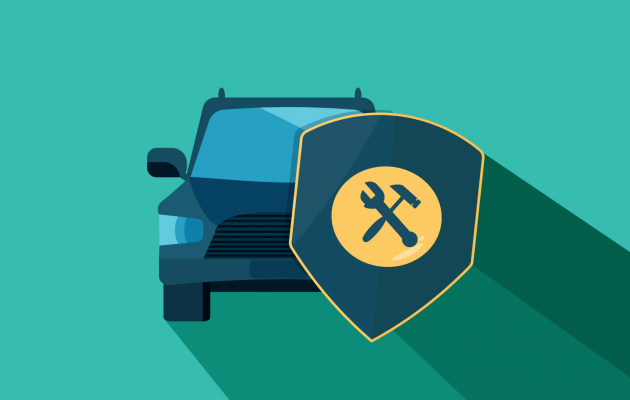On the Road to Nowhere

Maybe next to hearing an unusual sound at night outside your home, nothing is scarier than driving along a deserted, lightly travelled road, maybe on one of your long-anticipated weekend road trips and hearing something weird coming from your car. Then there is the dread of pulling over to the side of the road, digging out the emergency kit or tire repair tools to become your own roadside repair technician.
But of course, the real frightening part is getting a repair estimate after being towed by roadside assistance that has you reaching for the bus schedule.
There are all kinds of things you can do to protect yourself from high-cost auto care. And here is a little insight, thanks to a 2019 survey that found older adults paid almost 30% less for car maintenance than younger adults. What do they know that you might not? Read on and just remember that you don’t need a lot of the repairs I mention below in electric vehicles.
An ounce of prevention is worth a pound of cure
This is some very sage advice from Benjamin Franklin, one of the Founding Fathers of the United States, among many other societal contributions. Old Ben never drove a car and never saw them invented, but his advice works perfectly with the modern automobile. Let’s face it, these machines are complicated and expensive, so if you can do something in advance to reduce the cost of a future car repair bill, it is time and money well spent.
Read the owner’s manual
OK, I’ll admit. No matter how they dress it up, an owner’s manual is a very dull read. But besides telling you what all those buttons do on the dash, there is something in there that can really save you money. And that is the recommended maintenance schedule. This will show when certain maintenance items are due at what mileage levels.
If you really want to save money, read this schedule before you buy the car. Some cars are a lot more expensive to maintain than others (note that electric vehicles are generally cheaper). While that lease-return Mercedes might be the same cost as a new Mazda, it should come as no surprise which one will have the lower car ownership cost over the years. And don’t think skipping the required maintenance will save you money. It will only cost you more and get you a much lower price when you sell or trade-in the vehicle.
Do the recommended maintenance
The #1 easy and best engine maintenance is to do an oil change when recommended by your owner’s manual. Modern engine oils can go longer between changes than what your parents used. Just make sure you know the mileage interval recommended for your car.
Besides that, rotating the tires, checking the brake pads and hoses under the hood, flushing the radiator, replacing the transmission fluids, checking the engine timing belt and a bunch of small little things can add up saving you money over time. That’s because not changing the oil or transmission fluid or adjusting or replacing the timing belt as needed could end up meaning you need a new engine or transmission, or at least major rebuilds. Not rotating the tires or maintaining the right tire air pressure means they wear out faster. And not checking or replacing the brake pads means you end up replacing the more expensive disc rotors because you ground them down. Of course, when you maintain your brakes, you also can avoid a crash. There’s absolutely nothing cheap (or good) about crashing.
Check engine light is not a nuisance
I have a buddy who, while driving her Honda Civic down the freeway, observed the “check engine light” come on. About 10 minutes later, the temperature gauge went to its maximum reading. But instead of immediately pulling over and calling roadside assistance, he drove even further to Honda dealer that was open. But by then, the main part of the engine, the aluminum cylinder block, had warped from excessive heat and voilà, it was a new engine time. Don’t get me started. In his case, pulling over as soon as the check engine light came on and using his AAA membership card would have been much cheaper.
Budget for the big items
If you know that a big-ticket item is on your car’s maintenance schedule, start saving for it. Transmissions eventually need to be replaced, if you drive the vehicle long enough. But even lower cost parts, like alternators, are done supplying electrical power to your vehicle well before the car itself is worn out. Ask the dealer or your mechanic to go over the cost of the repairs or replacements on the maintenance schedule and budget accordingly. Even electric vehicles eventually need to replace their batteries at some point.
A maintenance service contract to cover major repairs might be the easiest way for you to budget for car maintenance. Just make sure the items they cover are those that you will most likely need repaired.
Selecting a reputable service provider
The simple analogy is the dealer’s service shop costs more than the local mechanic. And for some things, that could be true. But a technician with a certificate from the National Institute for Automotive Excellence (ASE certified) can be just as knowledgeable and at the same time, a lower cost alternative to a dealership. Just do your homework and check online reviews.
Here is a time-proven tip: if you find yourself going back to your repair shop multiple times for the same repair, you have the wrong shop.
A penny saved is a penny earned
I could not end this story without reaching back for another one of Ben Franklin’s best-known sayings. Smart vehicle maintenance not only means you can save money in the long run, but you are then also earning more money, too. And who doesn’t like the sound of that?


Join the discussion